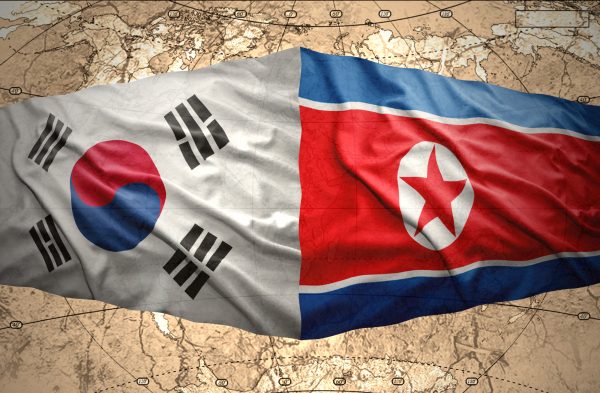
North Korea fired about 560 artillery shots and a short-range ballistic missile on Friday, South Korea’s Joint Chiefs of Staff (JCS) said. The artillery shots were launched from both North Korea’s east and west coasts and fell into the buffer zone along the two Korea’s maritime border. The artillery firings took place in two waves, with 170 rounds fired in the middle of the night and another 390 in the late afternoon.
In its public statement, the JCS called the North’s artillery shots “a clear violation of the military agreement” that was signed during the inter-Korean summit between then-South Korean President Moon Jae-in and North Korean leader Kim Jong Un in Pyongyang in 2018. Urging the North to halt its missile launches immediately, the JCS also gravely warned that the North’s consistent provocations are escalating military tensions on the Korean Peninsula.
Based on the military agreement signed in 2018, the two Koreas cannot use force against each other in any case. They also agreed to not take any provocative measures to invade or attack each other’s territories.
According to the South’s military, the artillery shots were at least the fourth violation by North Korea since the agreement was reached. The last incident that was explicitly cited as a violation was when North Korea fired shots against the South’s observation post in the demilitarized zone in Gangwon province in 2020.
The head of the ruling People Power Party said that Seoul should abrogate the military agreement is North Korea conducts a nuclear test, widely expected in the coming weeks. South Korea’s Presidential Office said that the future of the agreement depends on North Korea’s attitude.
Hours before North Korea fired its first round of artillery shots, 10 North Korean warplanes staged menacing flights nearby the inter-Korean border, triggering South Korea to deploy F-35A fighter jets. North Korea has dispatched warplanes to the area in the past few days as part of its ongoing responses to the South Korea-U.S. joint military exercises.
In addition, North Korea launched one short-range ballistic missile (SRBM) toward the waters off its east coast, the JCS said. The missile flew about 700 km with an altitude of 50 km from the Sunan area of Pyongyang, the capital of the North, and was launched about at 1:49 a.m. KST.
About 30 minutes after the North launched the SRBM, its state-controlled Korean Central News Agency (KCNA) published a statement from a spokesperson for the General Staff of the Korean People’s Army (KPA).
“According to a report on enemy movements in the front, the South Korean army conducted an artillery fire for about 10 hours near the forward defense area of the KPA Fifth Corps on Oct. 13,” the spokesperson said in his statement.
The spokesperson also that the North’s military “took strong military countermeasures” after “taking a serious note of this provocation action by the South Korean military in the front area.”
“The KPA sends a stern warning to the South Korean military inciting military tensions in the frontline area with reckless action,” the spokesperson said.
As North Korea marked its 13th ballistic missile launch since South Korean President Yoon Suk-yeol took office in May, Yoon recalled the military agreement and emphasized the necessity to check its effectiveness and imperativeness.
Calling the menacing flights of the North’s warplanes and its ballistic missile launches “violations” of the military agreement and the U.N. Security Council resolutions, Yoon asked his people to have “a firm hostile view” on North Korea. He also mentioned the country’s three-axis defense system as an effective defense means. The three-axis defense system consists of three key strategies: the Kill Chain preemptive strike system, Korea Massive Punishment and Retaliation (KMPR), and an operational plan to incapacitate the North Korean leadership.
With its military’s “tit-for-tat” response to the North’s missile threats, Seoul announced a plan to impose new sanctions on 15 North Korean individuals and 16 institutions that supported the North’s nuclear and missile development as well as Pyongyang’s efforts to evade existing sanctions. It is the first of new South Korean sanctions on North Korean individuals and institutions since December 2017, when the North tested its Hwasong-15 intercontinental ballistic missile and conducted its sixth nuclear test.
The annual Hoguk exercise of the South Korean military will run from October 17 to October 28, the South’s JCS said. The exercise, which will see partial participation of the U.S. military, will focus on improving the peacetime and wartime responses to the various threats of North Korea, the JCS added.
Considering the North’s ballistic missile launches in response to the South Korea-U.S. military exercises from late last month, it is likely we will see the North respond similarly to the Hoguk drills in the coming weeks. In particular, North Korea is widely expected to conduct a seventh nuclear test sometime this fall.
Following Spate of Artillery Fire, North Korea Warns of the South’s Military Activities
Source: Frappler

0 Comments